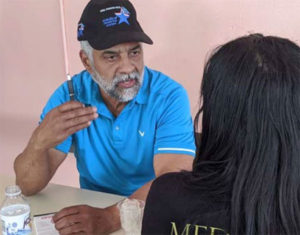Tag
pandemic preparedness
-
3 pandemic preparedness story angles to explore
While many of us may be weary of writing pandemic stories, journalists should continue covering pandemic threats; another one could…

-
Older health care professionals at risk during COVID-19 outbreak
Retired physicians, nurses and other health care professionals have been asked to volunteer for duty in the wake of the…

-
Bringing pandemic preparedness alive without sparking fear
When the Atlantic’s Ed Yong began thinking about a story on health security, he realized he needed a basic definition…

-
•
Resources for journalists covering flu
AHCJ member Stefanie Friedhoff has led a Nieman Foundation effort to bring together as much pandemic flu material as possible…

-
•
OIG: Are we ready for a flu pandemic?
The Department of Health and Human Services’ Office of Inspector General has released two reports assessing just how prepared Americans…

-
•
S.C.: Pandemic plan handled H1N1, needs tweaking
Joey Holleman at The State reviewed South Carolina’s reaction to H1N1 and what it revealed about the state’s pandemic preparedness.…





